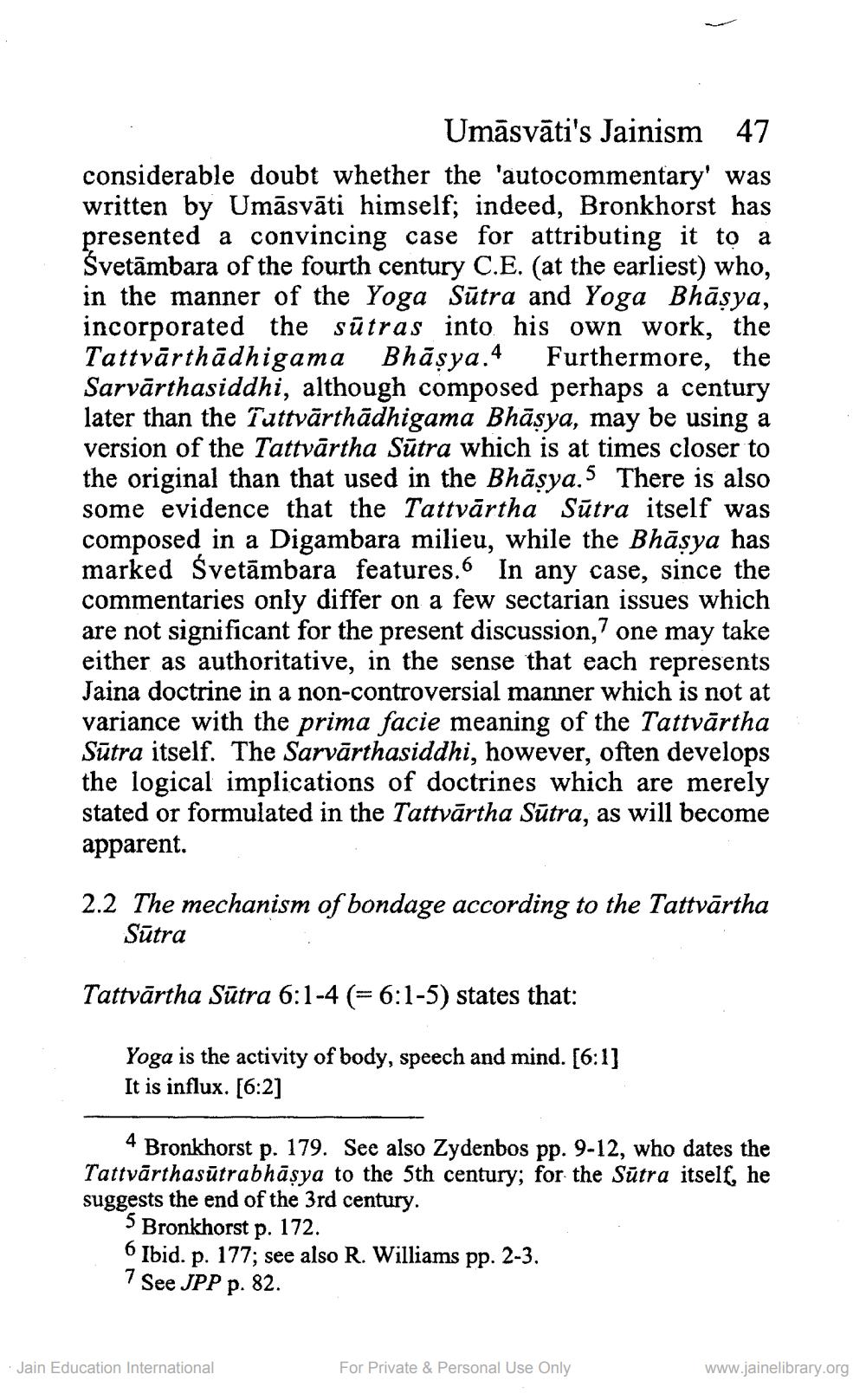________________
Umāsvāti's Jainism 47 considerable doubt whether the 'autocommentary' was written by Umāsvāti himself; indeed, Bronkhorst has presented a convincing case for attributing it to a Svetāmbara of the fourth century C.E. (at the earliest) who, in the manner of the Yoga Sūtra and Yoga Bhāsya, incorporated the sūtras into his own work, the Tattvārthādhigama Bhāșya.4 Furthermore, the Sarvārthasiddhi, although composed perhaps a century later than the Tattvārthādhigama Bhāşya, may be using a version of the Tattvārtha Sūtra which is at times closer to the original than that used in the Bhāsya.5 There is also some evidence that the Tattvārtha Sūtra itself was composed in a Digambara milieu, while the Bhāsya has marked Svetāmbara features. In any case, since the commentaries only differ on a few sectarian issues which are not significant for the present discussion, one may take either as authoritative, in the sense that each represents Jaina doctrine in a non-controversial manner which is not at variance with the prima facie meaning of the Tattvārtha Sūtra itself. The Sarvārthasiddhi, however, often develops the logical implications of doctrines which are merely stated or formulated in the Tattvārtha Sūtra, as will become apparent.
2.2 The mechanism of bondage according to the Tattvārtha
Sutra
Tattvārtha Sūtra 6:1-4 (= 6:1-5) states that:
Yoga is the activity of body, speech and mind. [6:1] It is influx. [6:2]
4 Bronkhorst p. 179. See also Zydenbos pp. 9-12, who dates the Tattvārthasūtrabhāsya to the 5th century; for the Sūtra itself, he suggests the end of the 3rd century.
5 Bronkhorst p. 172. 6 Ibid. p. 177; see also R. Williams pp. 2-3. 7 See JPP p. 82.
Jain Education International
For Private & Personal Use Only
www.jainelibrary.org




